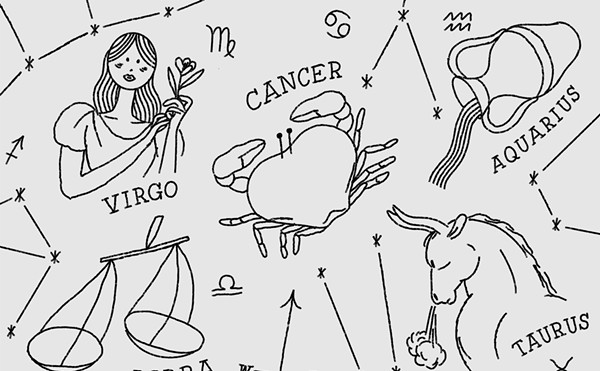Elmore Leonard’s Birmingham launch of Mr. Paradise, his first Detroit detective novel in twenty years, confirms the old adage, “Build it and they will come.” Nearly 100 people packed the café at the Woodward Avenue Borders on Saturday night to hear the author Time magazine once dubbed “the Dickens of Detroit.” In an inversion of the normal demographic for fiction, three-quarters of those in attendance were men. Young men, old men, men who wear football sweatshirts beneath $600 blazers, fit men, overweight men, young dads-toting-babies men.
The Dutch they came to hear was ageless. With his wire-rimmed spectacles and his tweed jacket, the 79-year-old writer could be your grandfather. With his salesman’s answers to every audience question (“My next book this, my last book that, these characters reappear in …), he sounded like someone on either side of 40 squirming beneath a heavy mortgage. Speaking of guns, cheerleaders and theft, he could’ve been 17.
Although they had his books in hand, new books, old books, penny dreadfuls (in the 1950s, Leonard wrote Westerns), when the audience had its chance to ask questions of the old master about his ear for dialogue, his mutant grammar and the occasional corpse, they asked almost exclusively about movies. Nineteen of Leonard’s 38 novels have been made into films, from 3:10 to Yuma in 1957 to the soon-to-be-released The Big Bounce, which opens Jan. 30. The movie questions ranged from the predictable (Q: Which are your favorites? A: Get Shorty, Jackie Brown and Out of Sight) to the annoying (Q: What’s it like working with Famous Director X? A: I’m not really that involved. I don’t write the screenplays) to the repeatedly annoying (Q: If you could cast the movie for Book X, who would you cast as Character A? A: I don’t know, I’m not a director. Q: If you could cast the movie for Book Y, who would you cast as Character B? A: I don’t know, I’m not a director). Despite recurring questions about (other) celebrities, Leonard managed to make a few interesting points about his own movie mania.
Part of the frenzy to turn Leonard’s novels into films may stem from their obvious vocal quality, principally the pitch-perfect dialogue of his characters, but also the bent grammar and human tone of the supposedly omniscient narrators (only one novel, Hombre, is written in the first-person). In the new Mr. Paradise, a woman’s hair is “big and involved,” a young drug dealer has “his strut, his bling bling, his girls iced up,” and young men cruise in cars with deafening stereos, “spinning their rims” and “bouncing their shit.” Can this inflected tone, this voice, transfer to film?
Yes, but not always successfully. According to Leonard, Get Shorty “got it.” The new film, The Big Bounce, however, is set in Hawaii, while the novel is set in Michigan. Leonard was clear “it’s not a Hawaii story,” joking that the filmmakers seemed to want to be able to “cut to waves and surfers whenever they got bored.” Beneath Leonard’s breezy answer is the fascinating premise that stories do have their places (a premise similar to his later suggestion that he can’t hear characters until he gets their names right: “Until I changed Frank Delaney’s name to Frank, I couldn’t get him to talk. Once I called him Frank I couldn’t get him to shut up”).
If stories belong in specific places, if they don’t exist without their settings, is Mr. Paradise the Detroit novel his publishers claim it is? Materially, geographically, yes. The Renaissance Center is “seven hundred feet of glass standing against a sky full of sleet.” According to one character, Detroit has, “A lot of music, not a lot of traffic, you can drive fast.” More significantly, although perhaps not fully, crime in Mr. Paradise is indivisible from race and class: “Coming into 1300 [Beaubien Street, police headquarters] there were brothers coming out carrying their shoelaces.”
Tucked safely in Birmingham between half-a-dozen Oriental rug emporiums and dealerships for Land Rover and Porsche, Leonard’s audience was even more reluctant than he was to talk seriously about crime. To my opening question about why he likes to write about thieves, Leonard gave his stock response, which included three almost unheard words: “Well, they’re more fun than people who belong to country clubs, with their golf scores and their lies. I mean they’re, you know … they’re more fun, that’s all.”
“And their lies” was a hyperlink no one, Leonard included, wanted to click. Ten minutes later, when plugging his forthcoming children’s book (A Coyote’s in the House), Leonard described a prison program in which youths at risk read crime novels, especially his, and then write book reviews about them. The audience cracked up at the setup, not the punch line, preferring to laugh at the superficial introduction, “There’s a unit at Orange County Correctional,” instead of hearing the sly author’s funny confession that he’s hoping some of the juvenile offenders will offer him good blurbs for the book and its criminal hero. Comedy, like irony or metaphor, doesn’t exist in just one dimension. Juvenile incarceration is not funny per se, it’s only funny when also manifest in another dimension, like, say, consumerism or class, like upper-middle-class readers laughing at “Orange County Correctional” before hearing that blurbs from the incarcerated might help Leonard sell books to, well, upper-middle-class buyers.
Slipping between dimensions is one of Leonard’s many skills, not only between fiction and film, or sales pitch and social commentary, but also between the difficult-to-define yet entirely discernible realms of highbrow literature and lowbrow genre fiction. Writers as diverse as Saul Bellow, Michael Ondaatje, Margaret Atwood and Martin Amis publicly state their adoration for Leonard. And with Atwood, at least, the respect is mutual. Asked last night which writers he admires, Leonard cited Hemingway (although, crucially, Dutch could only learn so much from Papa because he “realized Hemingway wasn’t funny”), Richard Bissell, Pete Dexter, and Atwood (whom he also admires publicly in the much-cited Ten Rules of Writing on his Web site).
Here again is a fascinating Leonard contradiction: The man who began his reading referring to an excerpt he has out in McSweeney’s (“Sort of a literary magazine thing. I don’t think they sell many”) adores Atwood (whom he called “a real novelist”), yet he despairs of writing with “too many words” and writers who refuse to “cut out the boring parts” (Atwood’s Alias Grace manages to make a double murder boring).
Skill aside — and, first and foremost, Leonard has skill — Leonard is most notable for these numerous contradictions. He knows about “golf scores and lies,” yet he knows the liars are buying his books. He’s a trickster. A Coyote’s in the House is more than just the title of his next book, it’s his confession, his motto, the warning sign that should flash the next time he walks into a public reading.
Darryl Whetter teaches English and creative writing at The University of Windsor. A Sharp Tooth in the Fur, his first book of stories, was released last May. E-mail [email protected]




